On the Art Encounters Biennial in Timișoara
Art Encounters Foundation Timișoara, Romania
by Teodora Talhoș
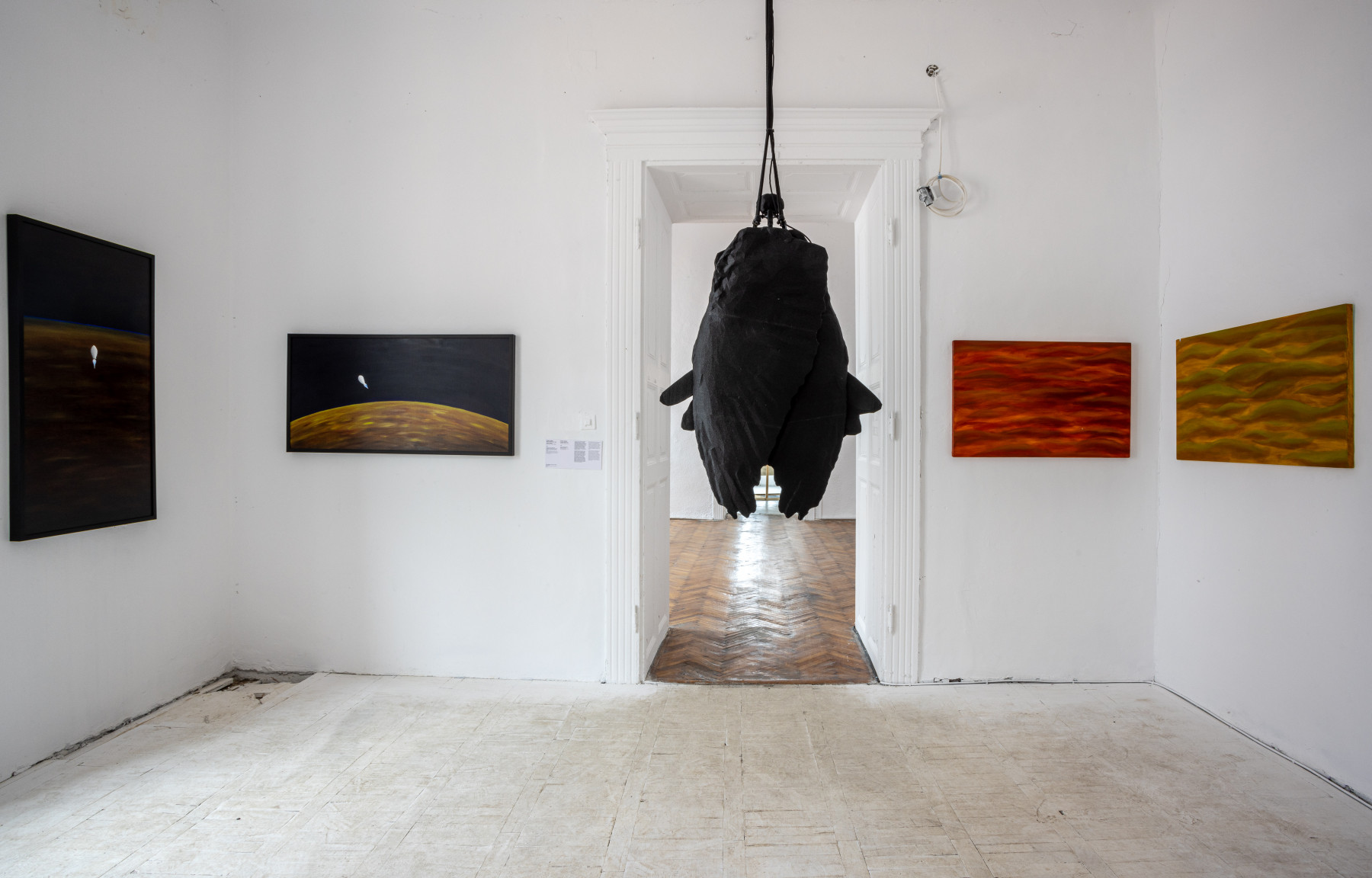
Art Encounters Biennial. Exhibition view, Dimitar Solakov, 2023. Photography: Adrian Câtu
What does the future look and feel like? Is it a place where humans can coexist with animals, plants and other species without conflict? Is it a space where humans must transcend their condition, become something else in order to adapt to a new environment? Or is this future ultimately no future at all, because everything will end very soon?
The Art Encounters Biennial, titled My Rhino is not a Myth, attempts to answer these and many others questions related to art, science and myths through an interdisciplinary approach in which story-telling occupies a central place. Curated by Adrian Notz in collaboration with Cristina Bută, Monica Dănilă, Ann Mbuti, Edith Lázár, Cristina Stoenescu and Georgia Țidorescu, the biennial opened mid-May in Timișoara, presenting works by both emerging and established, local and international artists.
Timișoara is one of this year’s three European Capitals of Culture – a title that honours the city and gives it the possibility at last to reveal its true colours to the world: the city proposes so many cultural events that one can barely keep up. Largely known for its impressive multiculturalism, a feature which has persisted over centuries, and also for the crucial role it played in 1989 as the departure of the bloody Revolution against the Ceaușescu regime, Timișoara is now the meeting point between West and East, centre and periphery, especially in the field of contemporary art.
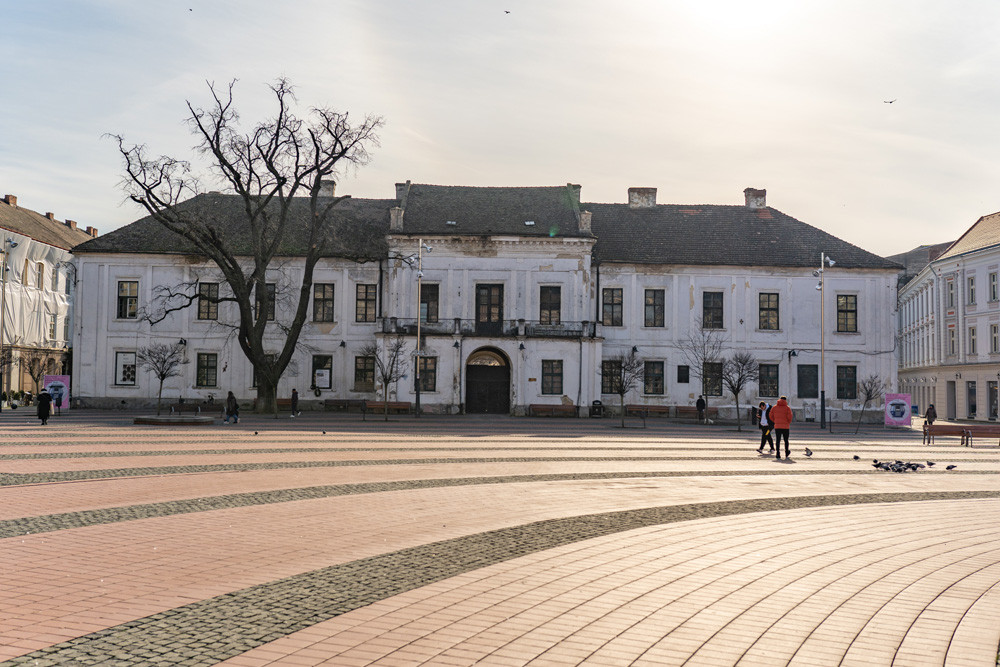
Garrison building. Photography: Art Encounters Biennial
The title of the biennial rests on Albrecht Dürer’s Rhinocerus, a woodcut the artist made in 1515 based solely on a story, as he himself had never seen such an animal. The rhino – a gift from an Indian sultan to the King of Portugal, who later intended himself to send the animal as a gift to Pope Leo X – was the first of its kind to be found in Europe since Antiquity. On the trip from Portugal to Rome, the ship that transported the rhino was wrecked and the animal, chained to the deck, drowned with the vessel. The story goes that his lifeless body was recovered, stuffed, and eventually arrived at its final destination only as a taxidermic relic. Dürer’s artwork is purely imaginative; nevertheless, it became one of the most popular depictions of an animal and was reproduced and published many times, including in scientific publications, up until the 18th century.
The Rhinocerus stems from a period of Western history when sciences were not yet divided from arts and humanities. At the same time, the story of the ‘exotic’ animal who died chained to a deck in a foreign country on a foreign continent tells us in an allegorical manner about geopolitical imbalances marked by violence and exploitation.
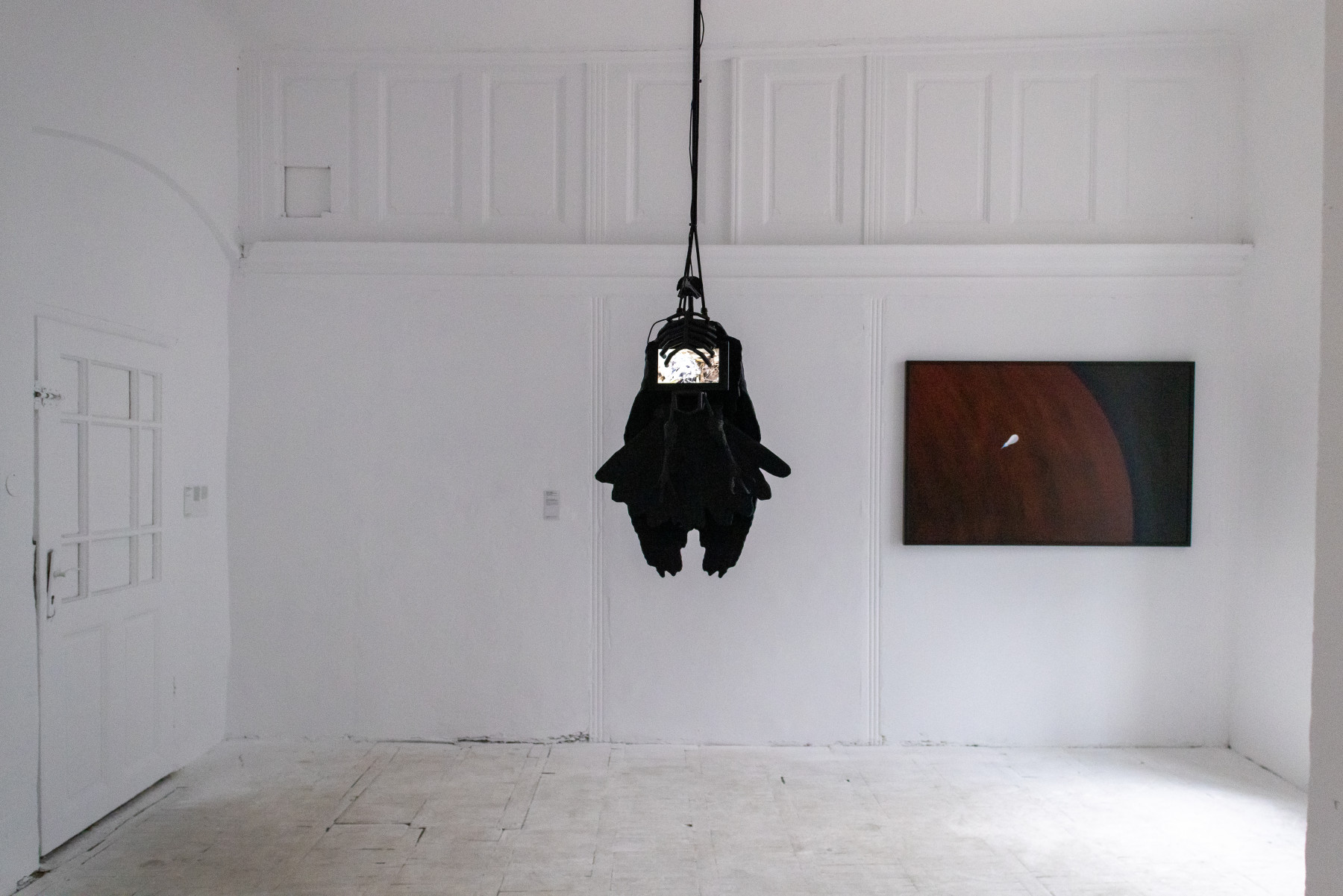
Art Encounters Biennial. Exhibition view, Dimitar Solakov, 2023. Photography: Adrian Câtu
Another connection established in the title of the exhibition is one with Romanian-French avant-garde writer Eugène Ionesco’s play Rhinocéros, written in 1959. The play narrates the uncanny story of the inhabitants of a village who gradually turn into rhinoceroses – an allusion to the rise of fascism in Europe before World War II and the conformity and mass-mentality which enabled the horrific political shift of the times. The biennial plays with this idea, encouraging resistance against conformity and promoting the imaginative power of speculation in arts and science in order to create a breach from largely accepted truths.
Divided into multiple spaces throughout the city, from air-conditioned office buildings to crumbling historical sites overlooked by the authorities, the biennial proposes a complex itinerary for a broad public of art and science enthusiasts.
I here set the focus on the Garrison, one of the biennial’s central locations – a fossil reminiscent of a tumultuous past. Located on Libertății (Freedom) Square in the middle of the city, the imposing edifice once fulfilled military purposes under the Habsburg Empire and later the Romanian government, and is now facing an uncertain future. Its initial function to house a Museum of the Romanian Revolution in 1989 was never fulfilled; in 2023, however, the run-down halls have opened their doors to host cultural events.
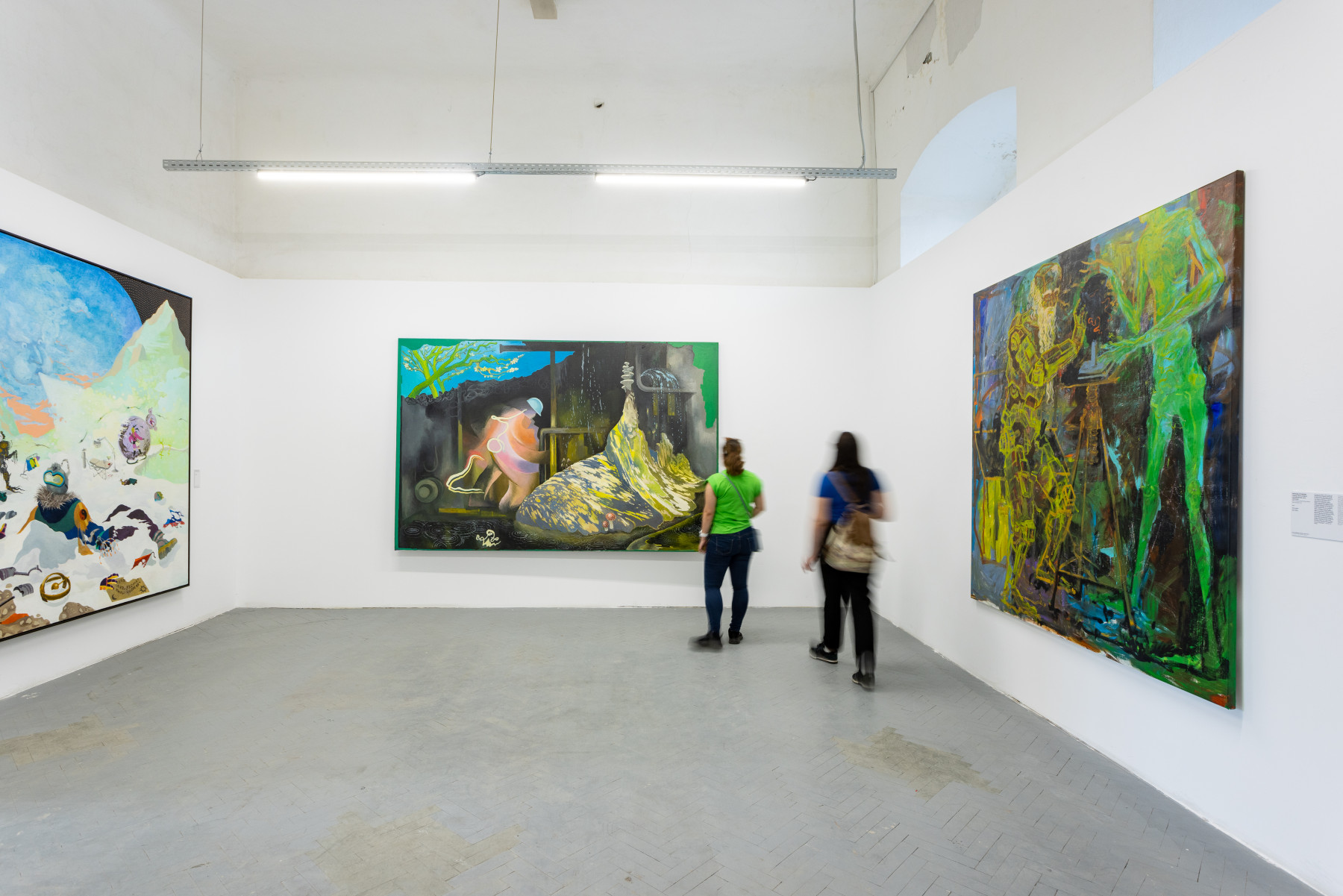
Art Encounters Biennial. Exhibition view, Hortenisa Mi Kafchin. Photography: Adrian Câtu.
Reaching the top of the stone stairs and entering the maze-like space of the exhibition, one finds a peculiar quiet room at the end of the hallway, displaying Dimitar Solakov’s works. The windows offer a view at a colourful outdoor installation of floating umbrellas stretching along the street – not part of the exhibition, the kitsch intervention is an initiative by the city aiming to attract tourists and instagrammers. The sound of kids laughing and playing as well as people chatting echoes around. When approaching the works, however, a sensation of goosebumps emerges.
A series of paintings by Solakov titled Exodus (2022) depict small vessels (somewhat evoking sperm cells) departing from a furry planet Earth which, according to the artist’s own narration, has become inhabitable. They appear tiny and vulnerable in comparison to the burnt and boiled planet. However, the vessels manage to escape and find a possible future elsewhere. In the middle of the room, the 3D printed carcass of a carbonised hawk hangs by its collar. Inside the bird’s ribcage, a video shows the decomposition process of small animals, while at the same time electric shocks are causing the feathered creature to twitch in an uncanny manner. Reflecting upon the damage caused by war and the atrocities committed by the Russian army in Ukraine, the artist attempts at making death present and visible in a way that fascinates, saddens, and repels at the same time. Right in the middle of a scene of worms eating the decaying corpse of a small animal, a violent sound pulls me out of my meditation. A door next to the installation, hardly noticeable, appears to be pushed by an invisible force that threatens to break through it. Titled A Few Degrees from Release (2023), the installation startles every visitor with fright – as it should, for tomorrow’s troubles resulting from climate change and the imminent threat of war cannot wait, they need to be addressed right now.
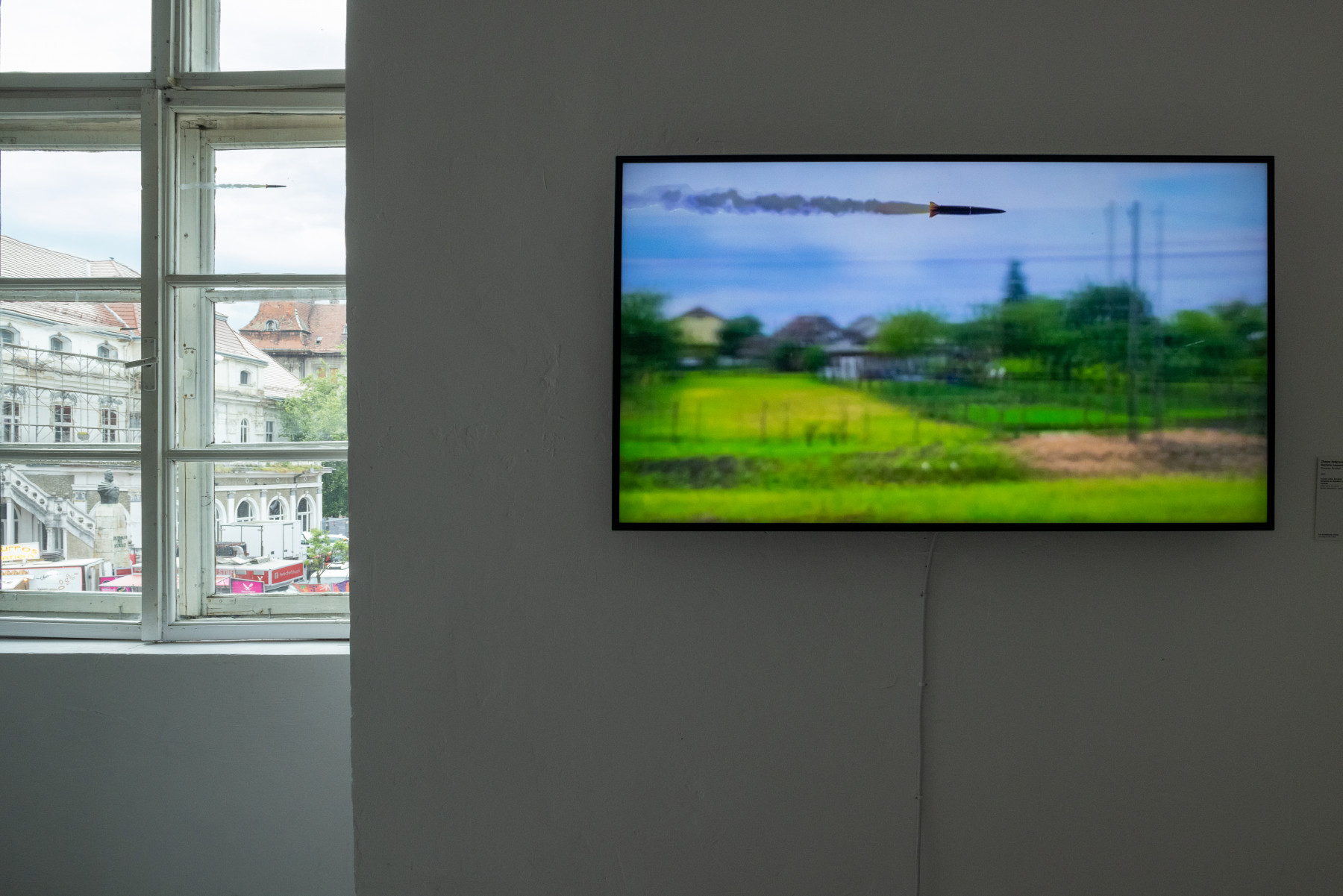
Zhanna Kadrova, Russian Rocket / Racheta rusească, 2022. Photography: Adrian Câtu
The urgency of the current geopolitical situation, especially in Eastern Europe, is highlighted once more on the same floor in Zhanna Kadyrova’s subtle installation Russian Rocket (2022). The piece is part of a series of works that cleverly raise awareness towards Russia’s full-scale invasion of Ukraine by confronting the visitor with the realities of war and placing them in the position of a powerless, astonished, observer. Stickers depicting Russian rockets can be taken home and are meant to be glued on windows, in order to witness what people in Ukraine see on a daily basis. I myself shared online a picture of the rocket fixed on the hall’s window, creating the illusion that a threat was flying right then over Liberty Square. Alarmed messages from friends reached me immediately, anxiously asking whether the snapshot was real. It is not real, yet, thankfully. But it could be, sooner than we expect. We must do what we can while we still can, in order to prevent it.
On a more magical note, Hortensia Mi Kafchin’s large paintings immerse the viewer in the artist’s sci-fi universe, where different temporalities and forms of life, human and non-human, seamlessly melt into each other. Hope for a better future can be read in Spring in Chernobyl (2019). Based on Artur Korneyev’s famous photograph in 1996 depicting the so-called “elephant foot,” a mass of highly radioactive lava formed during the Chernobyl disaster of 1986, the eerie scenario is interrupted by a disrupture in the upper left corner, where the broken wall exposes a growing and blooming tree. The scene reminds us viewers that even after some of the most destructive human catastrophes there is always a chance for renewal and rebirth – at least for nature.
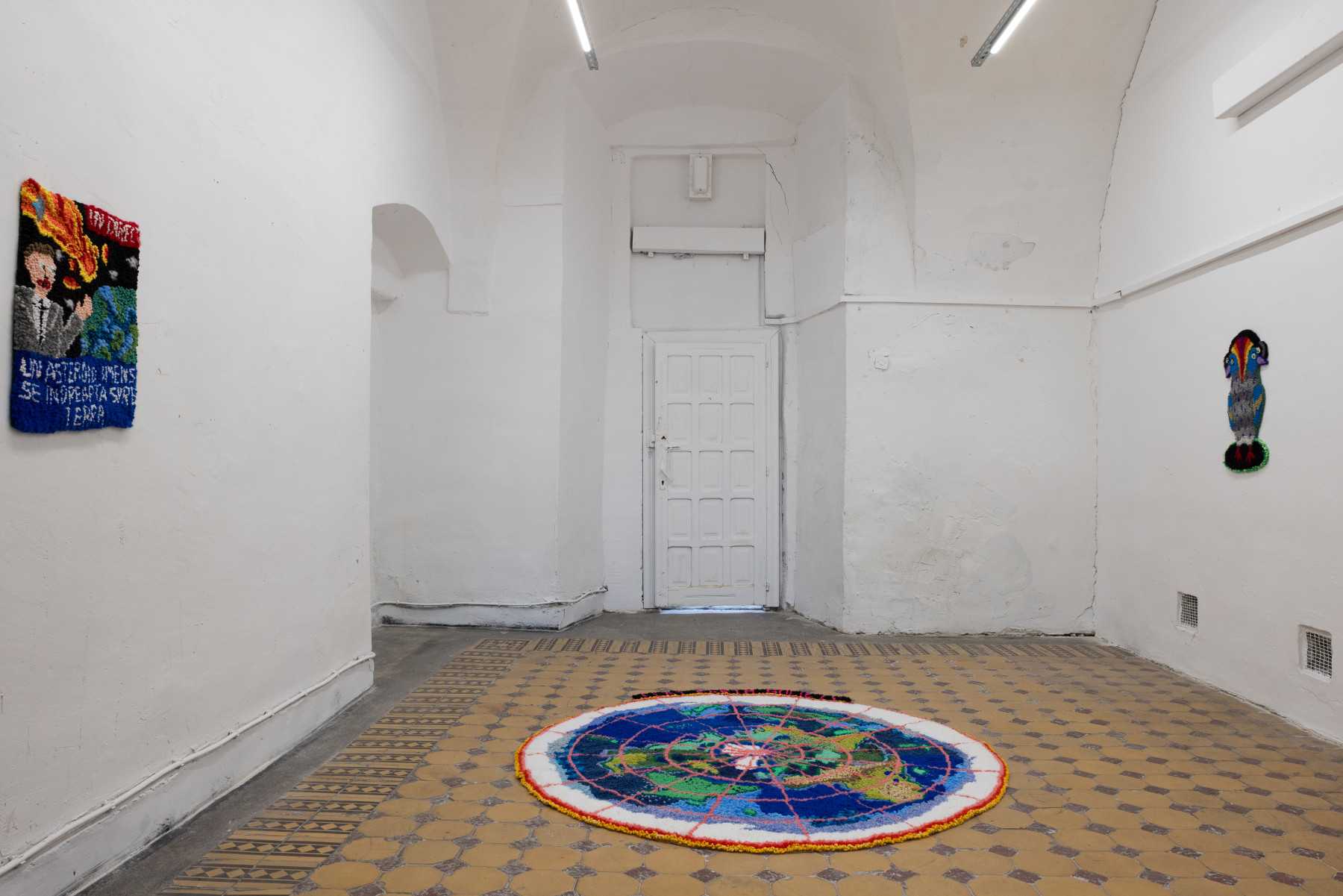
Art Encounters Biennial. Exhibition view, Megan Dominescu. Photography: Adrian Câtu
Two of my favourite mantras in life, “all is not lost” and “it is what it is,” phrases one repeats in extreme situations, were ironically present in Megan Dominescu’s textile works. Imbued with a dark humour transported through sharp and derisory comments on society, the pieces presented in the biennial depict people’s coping behaviour in the face of difficult or even absurd situations. Be it through the propagation of fake news (hello Flat Earth society!), through panicking (what if the news suddenly warned of A Huge Asteroid is coming to Earth?) or by relentlessly complaining about things one cannot change (Nothing Works and Everything’s Expensive), Dominescu captures the variety of strange reactions one can see and hear on a daily basis. Her colourful, carefully handcrafted works are perhaps the best antidote to the current frenzy – a typical response for Eastern European (generally marginalised and oppressed) peoples: let’s laugh it off until it passes, what else is there to do?!
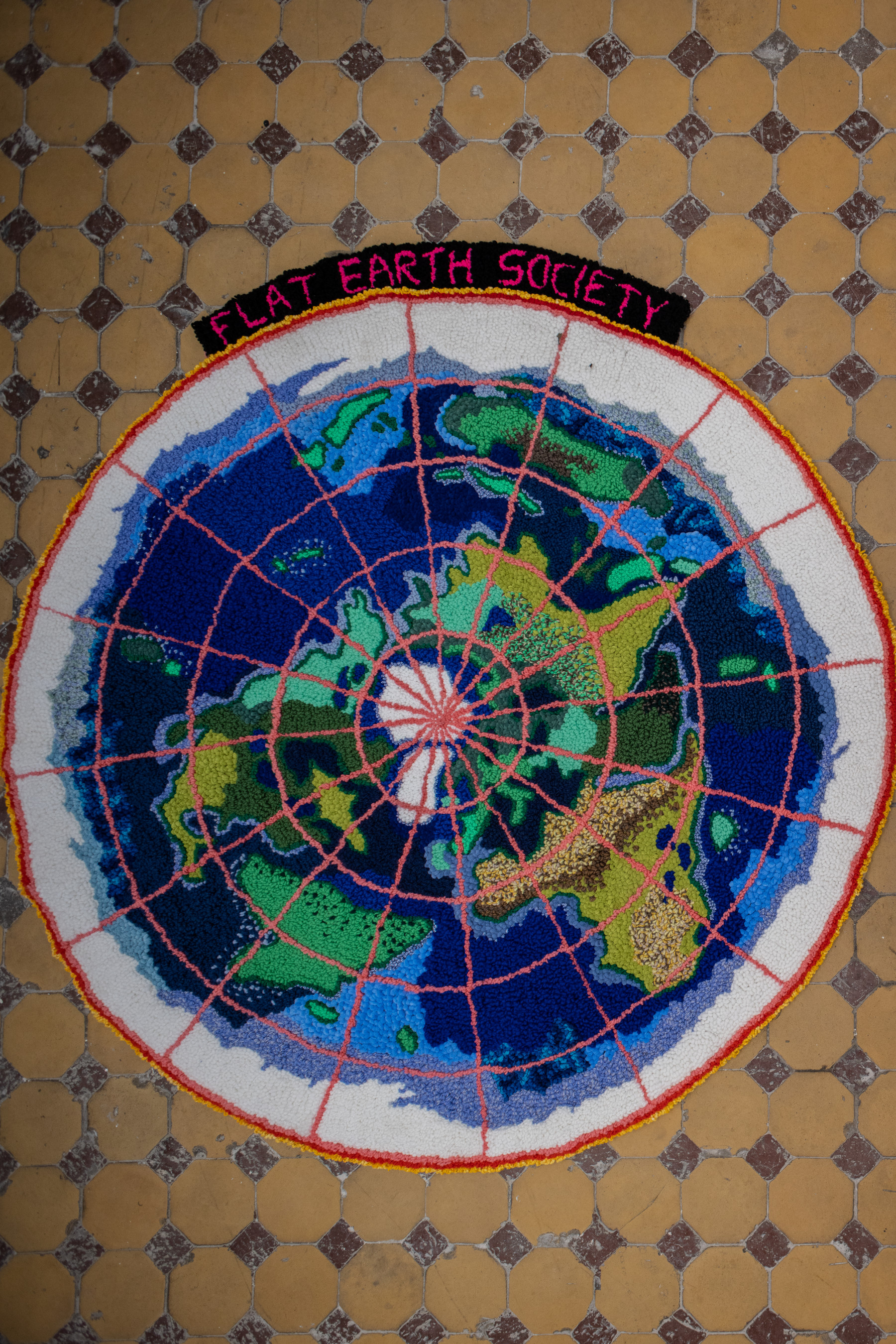
Megan Dominescu, Flat Earth, 2023. Photography: Adrian Câtu
My Rhino is not a Myth, Art Encounters Biennial
19/05 – 16/07/2023
Art Encounters Foundation
Timișoara, Romania